957 New COVID-19 Cases
Surges taking place across the state, including Milwaukee, Waukesha and Iron counties.
There were four more new COVID-19 cases reported Sunday than Saturday in Wisconsin, but the results come from 4,228 fewer tests.
The Department of Health Services reported 957 new cases were confirmed via testing over the past 24 hours from 9,978 processed tests. That’s up from the 953 cases reported Saturday from 14,201 tests.
And although the day-over-day testing total declined, something that often happens on the weekend, the state’s 14-day average climbed to a record high of 12,712.57 tests per day. A total of 93,159 tests have been processed in the past week, a record for the state.
But even as testing has increased over the past 14 days, the number of tests coming back positive has increased faster. The one-day positive case rate of 9.59 percent is the highest ever recorded when more than 9,000 tests were processed.
The more informative seven- and 14-day positive case rate averages moved in opposite directions. The seven-day average fell from 7.00 percent to 6.99 percent, while the 14-day average climbed to 7.01 percent from 7.00 percent. The two measures are now effectively equal for the first time since the state reported a 14-day low of 2.69 percent on June 19th, possibly indicating the disease’s spread might not be accelerating, but still highly elevated, in the state.
DHS did report that 26 people were newly hospitalized below the 30-day average of 35. A total of 4,394 Wisconsin residents have required hospitalization over the course of the outbreak.
One death was recorded in the past 24 hours, pushing the outbreak total to 892. An average of 4.2 deaths per day have been reported over the past 30 days, below the 100-day average of 6.87.
Over half of the new cases in the past 30 days have been in individuals under the age of 40. Over the past month, one-third of new cases have been people in their 20s. Younger people have substantially lower hospitalization and death rates from the disease.
A total of 48,827 people have tested positive for the disease since the outbreak began, with 22,080 of those coming in the past 30 days and 6,512 in the past week. DHS reports that 78 percent of individuals with a confirmed case have “recovered,” as defined by a documented abatement of symptoms or a diagnosis over 30 days ago. The percent fell from a high of 79 as a surge in new cases was reported.
Milwaukee County continues to have the worst outbreak in the state, both in total number and per-capita rate.
According to DHS data, 1,901.1 out of every 100,000 Milwaukee County residents have tested positive for COVID-19 (up from 1,871.8) since the outbreak began. Racine County has 1,487.2 cases per 100,000 residents (up from 1,474.9), Brown County, which is anchored by Green Bay, has 1,449.7 cases per 100,000 residents (up from 1,437.7).
Kenosha (1,333.7), Iron (1,049.9), Walworth (1,02.3), Trempealeau (890), Rock (797.4), Waukesha (752.4), Dane (723), Dodge (702.9), Forest (632.1), La Crosse (623.7), Waupaca (605.5) and Jefferson (603.6) are the only other counties with more than 600 cases per 100,000 residents.
The statewide average of cases per 100,000 residents rose to 845 (up from 828.4 yesterday).
Charts and Maps
Percent of COVID-19 cases by hospitalization status
| Hospitalization status | Number of confirmed cases as of 7/26/2020 | Percent of confirmed cases as of 7/26/2020 |
|---|---|---|
| Ever hospitalized | 4,394 | 9% |
| Never hospitalized | 27,766 | 57% |
| Unknown | 16,667 | 34% |
| Total | 48,827 | 100% |
Percent of COVID-19 cases resulting in hospitalization within age group
Confirmed COVID-19 cases and deaths by gender
Confirmed COVID-19 cases and deaths by race
Confirmed COVID-19 cases and deaths by ethnicity
Number of positive cases and deaths by county
| Wisconsin County | Positive as of 7/26/2020 | Negative as of 7/26/2020 | Deaths as of 7/26/2020 | Rate (positive cases per 100,000 people) as of 7/26/2020 | Case fatality percentage (percent of cases who died) as of 7/26/2020 |
|---|---|---|---|---|---|
| Adams | 61 | 2,199 | 2 | 303.9 | 3% |
| Ashland | 15 | 1,544 | 0 | 95.5 | 0% |
| Barron | 116 | 4,831 | 3 | 256.3 | 3% |
| Bayfield | 18 | 1,707 | 1 | 120.1 | 6% |
| Brown | 3,766 | 41,213 | 50 | 1449.7 | 1% |
| Buffalo | 36 | 1,477 | 2 | 273.4 | 6% |
| Burnett | 9 | 1,330 | 1 | 59.0 | 11% |
| Calumet | 215 | 5,073 | 2 | 431.7 | 1% |
| Chippewa | 192 | 9,358 | 0 | 301.7 | 0% |
| Clark | 157 | 3,247 | 7 | 455.2 | 4% |
| Columbia | 195 | 8,483 | 1 | 342.4 | 1% |
| Crawford | 52 | 3,060 | 0 | 319.3 | 0% |
| Dane | 3,831 | 107,299 | 33 | 723.0 | 1% |
| Dodge | 617 | 14,346 | 5 | 702.9 | 1% |
| Door | 82 | 3,813 | 3 | 298.8 | 4% |
| Douglas | 92 | 3,971 | 0 | 212.0 | 0% |
| Dunn | 88 | 4,963 | 0 | 197.8 | 0% |
| Eau Claire | 433 | 12,861 | 3 | 420.4 | 1% |
| Florence | 5 | 529 | 0 | 115.3 | 0% |
| Fond du Lac | 493 | 13,042 | 6 | 481.8 | 1% |
| Forest | 57 | 823 | 4 | 632.1 | 7% |
| Grant | 286 | 8,122 | 14 | 551.8 | 5% |
| Green | 120 | 4,219 | 1 | 325.5 | 1% |
| Green Lake | 49 | 2,221 | 0 | 261.2 | 0% |
| Iowa | 57 | 3,560 | 0 | 241.3 | 0% |
| Iron | 60 | 805 | 1 | 1049.9 | 2% |
| Jackson | 39 | 4,818 | 1 | 190.2 | 3% |
| Jefferson | 511 | 11,219 | 4 | 603.6 | 1% |
| Juneau | 107 | 5,497 | 1 | 405.0 | 1% |
| Kenosha | 2,245 | 24,522 | 50 | 1333.7 | 2% |
| Kewaunee | 100 | 2,212 | 1 | 491.2 | 1% |
| La Crosse | 735 | 15,760 | 1 | 623.7 | 0% |
| Lafayette | 99 | 2,036 | 0 | 591.6 | 0% |
| Langlade | 30 | 1,857 | 1 | 156.5 | 3% |
| Lincoln | 52 | 2,861 | 0 | 186.7 | 0% |
| Manitowoc | 247 | 8,986 | 1 | 311.1 | 0% |
| Marathon | 494 | 10,688 | 4 | 365.2 | 1% |
| Marinette | 231 | 6,158 | 3 | 569.8 | 1% |
| Marquette | 67 | 1,656 | 1 | 440.6 | 1% |
| Menominee | 17 | 1,547 | 0 | 371.3 | 0% |
| Milwaukee | 18,140 | 157,401 | 427 | 1901.1 | 2% |
| Monroe | 177 | 6,378 | 1 | 389.0 | 1% |
| Oconto | 140 | 5,251 | 0 | 372.8 | 0% |
| Oneida | 69 | 3,923 | 0 | 195.2 | 0% |
| Outagamie | 965 | 22,342 | 12 | 522.3 | 1% |
| Ozaukee | 468 | 9,126 | 16 | 530.1 | 3% |
| Pepin | 38 | 895 | 0 | 523.3 | 0% |
| Pierce | 148 | 4,079 | 0 | 355.7 | 0% |
| Polk | 97 | 5,180 | 2 | 223.8 | 2% |
| Portage | 321 | 7,805 | 0 | 454.7 | 0% |
| Price | 19 | 1,628 | 0 | 140.8 | 0% |
| Racine | 2,906 | 38,728 | 72 | 1487.2 | 2% |
| Richland | 21 | 2,443 | 4 | 119.7 | 19% |
| Rock | 1,290 | 21,787 | 25 | 797.4 | 2% |
| Rusk | 13 | 1,124 | 1 | 91.7 | 8% |
| Sauk | 288 | 10,959 | 3 | 452.9 | 1% |
| Sawyer | 24 | 2,318 | 0 | 146.6 | 0% |
| Shawano | 129 | 5,525 | 0 | 314.6 | 0% |
| Sheboygan | 473 | 13,683 | 5 | 410.6 | 1% |
| St. Croix | 390 | 9,351 | 2 | 443.6 | 1% |
| Taylor | 41 | 1,584 | 0 | 201.4 | 0% |
| Trempealeau | 262 | 4,456 | 1 | 890.0 | 0% |
| Vernon | 48 | 3,437 | 0 | 157.3 | 0% |
| Vilas | 22 | 1,902 | 0 | 101.9 | 0% |
| Walworth | 1,051 | 13,293 | 21 | 1020.3 | 2% |
| Washburn | 10 | 1,583 | 0 | 63.7 | 0% |
| Washington | 700 | 11,987 | 19 | 520.3 | 3% |
| Waukesha | 3,001 | 42,453 | 43 | 752.4 | 1% |
| Waupaca | 312 | 6,688 | 14 | 606.5 | 4% |
| Waushara | 69 | 4,811 | 0 | 286.1 | 0% |
| Winnebago | 954 | 23,544 | 16 | 561.4 | 2% |
| Wood | 165 | 7,972 | 1 | 225.2 | 1% |
| Total | 48,827 | 817,549 | 892 | 845.0 | 2% |
If you think stories like this are important, become a member of Urban Milwaukee and help support real, independent journalism. Plus you get some cool added benefits.
More about the Coronavirus Pandemic
- Governors Tony Evers, JB Pritzker, Tim Walz, and Gretchen Whitmer Issue a Joint Statement Concerning Reports that Donald Trump Gave Russian Dictator Putin American COVID-19 Supplies - Gov. Tony Evers - Oct 11th, 2024
- MHD Release: Milwaukee Health Department Launches COVID-19 Wastewater Testing Dashboard - City of Milwaukee Health Department - Jan 23rd, 2024
- Milwaukee County Announces New Policies Related to COVID-19 Pandemic - David Crowley - May 9th, 2023
- DHS Details End of Emergency COVID-19 Response - Wisconsin Department of Health Services - Apr 26th, 2023
- Milwaukee Health Department Announces Upcoming Changes to COVID-19 Services - City of Milwaukee Health Department - Mar 17th, 2023
- Fitzgerald Applauds Passage of COVID-19 Origin Act - U.S. Rep. Scott Fitzgerald - Mar 10th, 2023
- DHS Expands Free COVID-19 Testing Program - Wisconsin Department of Health Services - Feb 10th, 2023
- MKE County: COVID-19 Hospitalizations Rising - Graham Kilmer - Jan 16th, 2023
- Not Enough Getting Bivalent Booster Shots, State Health Officials Warn - Gaby Vinick - Dec 26th, 2022
- Nearly All Wisconsinites Age 6 Months and Older Now Eligible for Updated COVID-19 Vaccine - Wisconsin Department of Health Services - Dec 15th, 2022
Read more about Coronavirus Pandemic here


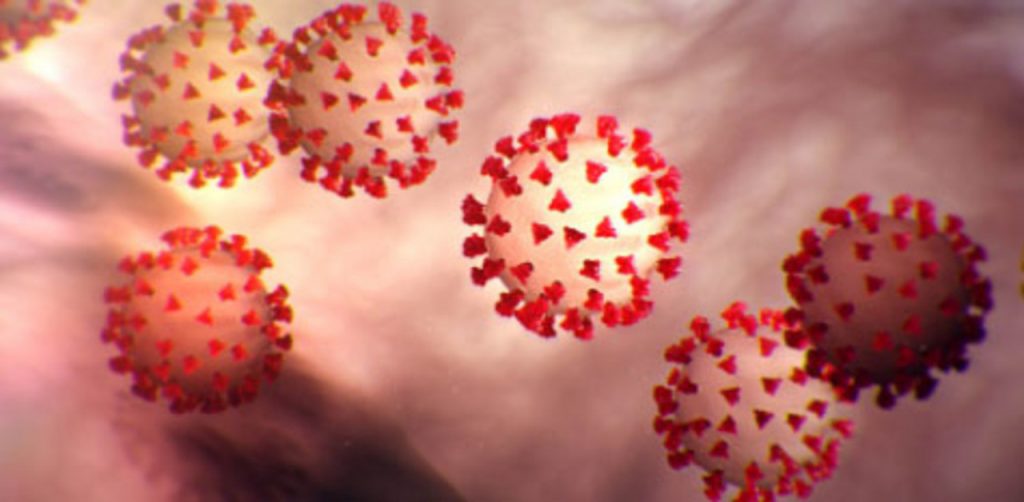
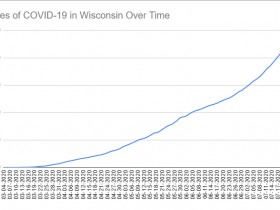
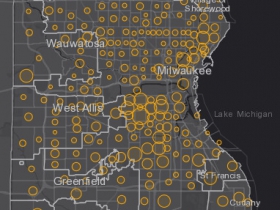
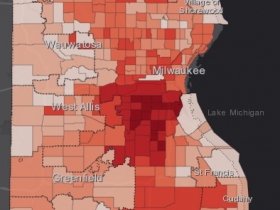
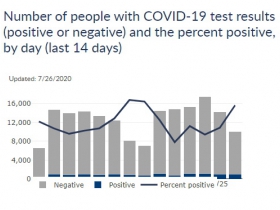
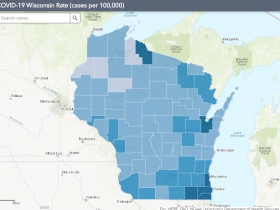
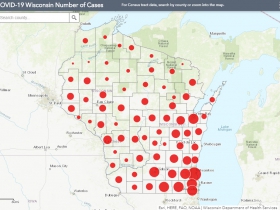
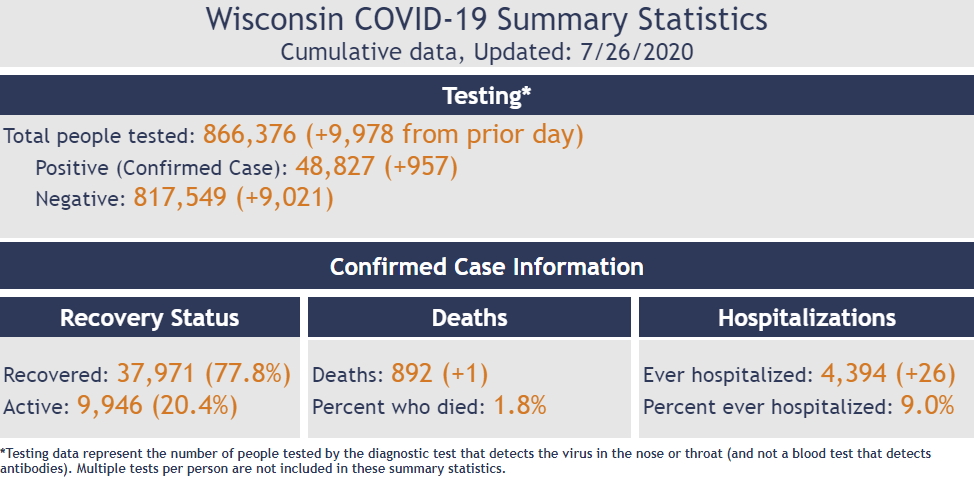
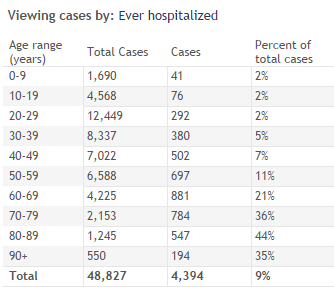

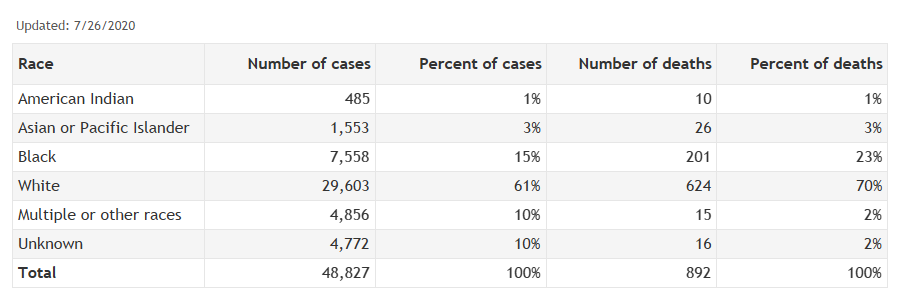



















I’m feeling like the risk of this virus is overblown for the majority of the population – though it can obviously be serious to very serious for some.
What I’d really like to know is the # of confirmed cases over the last 14 days. In other words, how many people are actively running around and are confirmed to have Covid and are presumably contagious (note that if people do test positive, they are asked to self quarantine so those folks likely aren’t running around maliciously). Secondly, an estimate of the # of people that have the Covid 19 – I’ve seen estimates of 10x the actual confirmed cases.
* Let’s round the 953/day positive test results to 1,000/day and say 14,000 confirmed cases over the last 14 days and then multiply that # by 10 to estimate that over the last 14 days 140,000 people have gotten the disease and are contagious.
* With 5.8MM population for Wisconsin, that 140,000 is about 2.4% of the Wisconsin population = 2.4 people are infected out of every 100 (97.6 people are not infected). I have a pretty good chance of running into the 97.6 people that aren’t infected – pretty small odds I run into the 2.4 people that are infected and even slimmer chance that I breathe enough of their exhaled breath to contract the disease from them.
And even if I do get the Corona Virus, my odds are pretty good. Within Wisconsin, 21% of people age 60 to 69 end up hospitalized.
• That’s a percentage based on confirmed cases (people that sought out to get a test and tested positive).
• The actual # of corona virus cases is estimated to be 10x the confirmed cases (many people are asymptomatic or have minor symptoms and don’t bother getting tested) – so that would mean that the actual percentage of people age 60 – 69 that end up hospitalized is 2.1%.
* Hospitalization doesn’t mean death.
I would be very cautious using any estimate of how many people actually have the disease versus those with confirmed cases. Dr. Ryan Westergaard estimated early in the outbreak that the actual number of cases could be as high as ten times the number of cases. But there is now at least five times the number of tests happening.
There have been 12,379 positive tests in the past 14 days, but that is a slightly misleading number for a few reasons. Most notably, people could be getting tests days after the onset of symptoms. DHS has a nice graph on this page (https://www.dhs.wisconsin.gov/covid-19/county.htm) that shows how the state is backdating cases to the day the sample was collected or symptoms were first reported.
Hospitalization data would provide the best guidance on this, but the data has now been unavailable for almost a week (at a time when it’s either spiking or we are learning that a surge in cases might be finding mild cases that earlier went undiagnosed).
Dmkrueger2, your post makes some incorrect, and potentially fatal, assumptions…
• If, as you suggest, only 2.4% of people are contagious, and you closely encounter only ten of them in a given week, there is a 21.6%* one of them has it. (You would have better odds—16.7%—playing Russian roulette.) If there are 50 people in a poorly-ventilated, tightly-packed bar, you have a 70.4% chance of COVID wafting through the air.
It doesn’t matter how many uninfected people you meet; if one is positive, you can get it.
• You assume that since 90% of COVID cases are asymptomatic, that YOU have a 90% chance of an asymptomatic case, too. That’s only true if you’re of “average” age. If you are older, your odds of escaping COVID without symptoms is much lower. One study found that older people were much less likely to get off with asymptomatic COVID. (Infected people over 70 were over 3 times as likely to have “clinical symptoms” than those between 10 and 19, so your chances of needing hospitalization are much higher than the 2.1% you cite.)
https://www.nature.com/articles/s41591-020-0962-9
• Even if you don’t get sick enough to be hospitalized, you might still get quite sick for a long time. Consider the case of CNN host Chris Cuomo who had a “mild” case—not sick enough for the hospital. He was wracked with chills (he shivered so hard he broke a tooth) and hallucinations.
We have a friend with a mild case (no hospital) a few months ago and is back working, but says she is still dogged with chronic fatigue that she never had before. There are thousands of such COVID “long-haulers”.
• You correctly say that hospitalization doesn’t mean death, but being hospitalized does mean you are VERY, VERY sick (most likely unable to breathe, a sensation that is not tolerable). We have another friend (late 60s, retired NYC cop) who was hospitalized for a month (including 9 days on a ventilator) and who, after hospital discharge, was still so sick that he spent ANOTHER 6 weeks in a nursing home trying to put his life back together.
• You assume that COVID is one-and-done—that once the virus in your nose falls below the level that a test can sense, that there is nothing more to come. We just don’t know if that’s true because this virus is so new.
MANY viruses linger in your body, undetected, for years before coming back to make you sick again. Herpes is one example. Polio is another, Chicken pox/shingles is a third. There is already some evidence that COVID sickens people well after they “get better”; the Kawaski-like “MIS-C” hitting a few children is one such example.
COVID is more serious than polio. It has killed more Americans in 6 months than polio sickened (deaths, paralysis, mild cases, everything combined) in any 12 months.
* Here’s how I got that number (22% chance of exposure after closely encountering just ten people)…
97.6% (uninfected percentage) raised to the 10th power is 78.4%—the odds that ALL 10 people are uninfected. That means that there is 21.6% chance that at least one IS infected.
To expand on what I posted earlier about how COVID might not be “one-and-done” (i.e. you might have health problems well after you “recover” from COVID)…
I saw a story about two German studies that suggest that COVID quietly damages people’s hearts. The first study examined 100 “recovered” COVID patients (median age 49, 2/3 of which had “mild” cases—not needing hospitalization).
To me, the stunning thing is that most (78%) of the people had heart problems that showed up on an MRI. This is after they “recovered” from COVID and apparently they had no inkling that anything was wrong with their hearts.
https://jamanetwork.com/journals/jamacardiology/fullarticle/2768915
The second study involved autopsies of older people (median age 85) with COVID (most of whom had pneumonia listed as cause of death) which showed that most of them had detectable COVID virus in their hearts after death.
Regular COVID tests only look for virus in your nose or mouth; except for these autopsies, we don’t normally look for COVID virus in other body parts.
https://jamanetwork.com/journals/jamacardiology/fullarticle/2768914
The moral of the story is that COVID is a gift that keeps on giving, even after you have recovered, even if you had no symptoms.
This is nothing to mess around with.